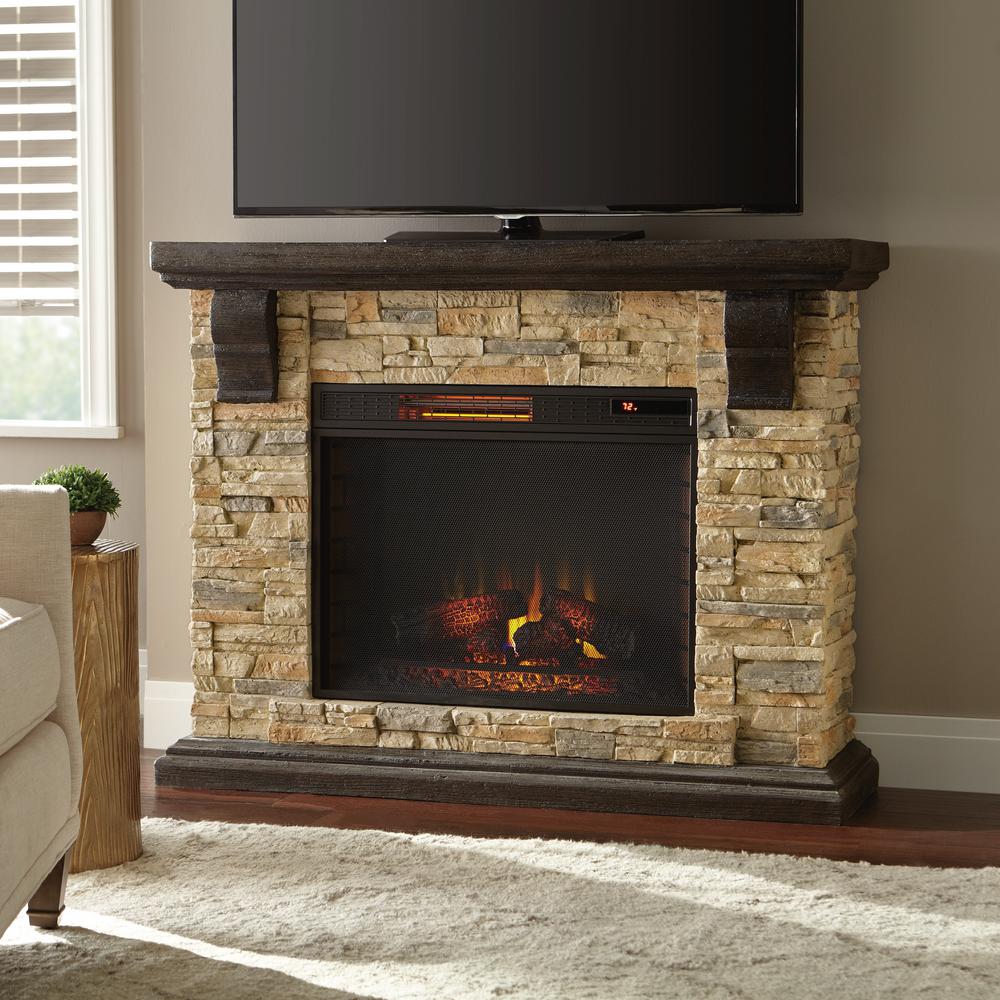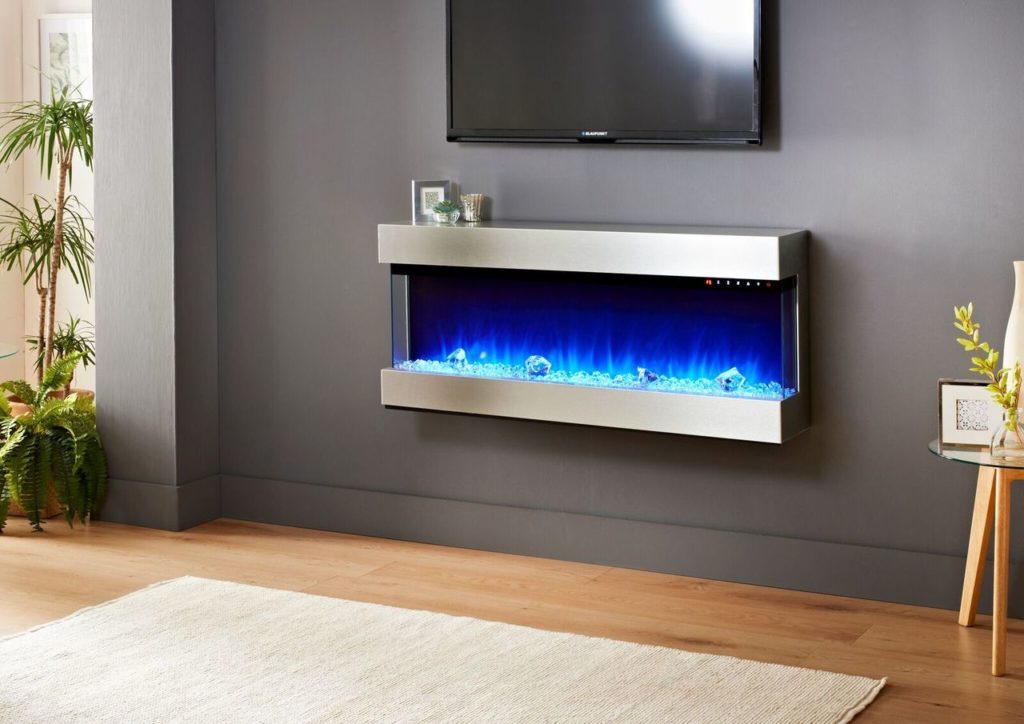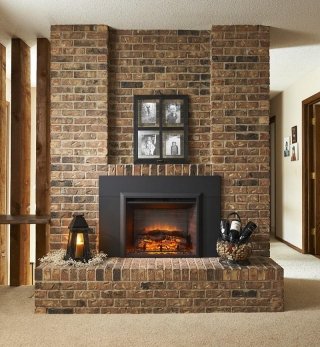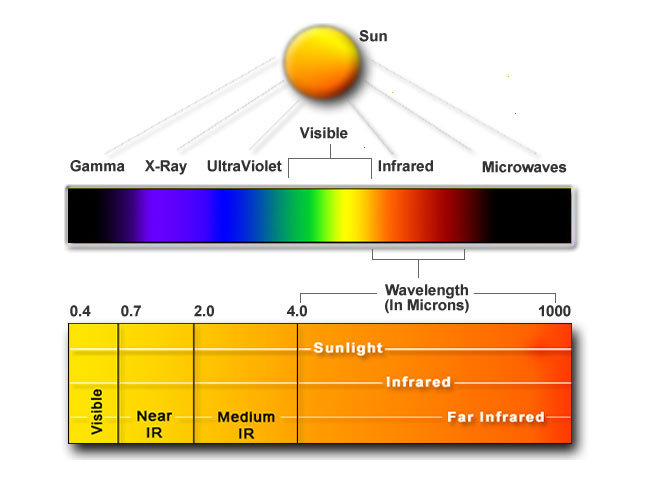During the mid-winter, especially, in the last week of December and the first few weeks of January, the weather becomes extremely harsh and cold. The same kind of scenario occurs in the summer and rainy seasons also as you will find a few weeks when the weather shows its dreadful nature.
To deal effectively with the terribly cold weather conditions in winter, you badly need the appropriate heating equipment. Many heating systems are available in the local or online store but not all of them may fulfill our desire. But infrared heater and electric fireplace are among the many heating systems, on which, you can rely without any hesitation. They are becoming very popular as household heating appliances.
Even though both heating equipment may yield you the same degree of satisfaction, they are very different. We have dedicated the following discussions to the differences between them. We are going to explore this subject matter by looking into the various aspects of these heating appliances.
These aspects include the working mechanisms, various types of each, their designs, cost-effectiveness, health issues, and heating capacities. We do hope that this shall dispel all doubts you may have and allow you to arrive at the best ever decision.
Quick Look at Our Best Picked Electric Fireplace
[ninja_tables id=”2356″]
Differences Between Infrared Heater and Electric Fireplace
#1: Working Mechanism
Electric Fireplace
These two heating appliances differ in their working mechanisms. First of all, discuss the working procedure of the electric fireplace. The electric fireplace possesses a heating element on the top or bottom part of the fireplace that you will not find in traditional gas or wood-burning fireplace. On the contrary, it requires no professional installation or high-quality venting system.
The electric fireplace draws cool air inside the fireplace. After that, the heating element or coil of the fireplace warms the cool air and forces the warm air back out into the room gently. It uses a fan to do this. It is also smokeless and thus great for the respiratory health of the room occupants. It is also easier to engage as you only require to switch it on or off.
Infrared Heater
An infrared heater emits infrared light radiation to heat up a room. Infrared lights aren’t visible since it’s part of the electromagnetic spectrum. When we switch on an infrared heater, the electricity flow in the heating elements of infrared light bulbs will warm it so that it starts producing infrared light. This light radiating from the heater targets the objects in the room where it is placed rather than targeting the entire surrounding. It is the main reason why infrared heaters are more efficient than electric fireplaces. When an object gets in contact with the infrared rays produced by this heater they become hot and also starts to radiate heat. The ultimate result is less wastage of energy and better heat output.
Read this article “How Does Infrared Heater Works” for details.
This Video Will Help To Understand The Working Process More Easily!
#2: Type
Electric Fireplace Mantels

This kind of fireplace comprises a mantel and a firebox. The mantel houses all the constituent parts and components that make up the fireplace. The firebox, on the other hand, generates heat. It draws its power from the standard 120V wall outlet.
Wall Mount Electric Fireplaces

As the names suggest, this kind of fireplace usually mounts on the wall. It is great for long-term use and applicability. This is because this position is hardly affected by interferences from the occupants of the rooms.
Electric Fireplace Inserts

Fireplace inserts are small and compact in size. They are designed such that they can fit easily in an existing or old fireplace.

Near Infrared
This first kind of heater emits radiation waves that measure 0.75 to 1.4 microns. It also produces high temperatures that reach the 1300°C mark. This kind of heater is also familiar with the name ‘short wave’, ‘bright’, and ‘IRA’.
Medium Infrared
It is comparatively less effective than the near infrared heater. Its waves measure 1.4 to 3 microns long and its maximum temperature output is around 500°C-800°C. Other than these the quality of the flames it produces is the deep-red light (like bar fires). It also goes by the names medium wave or the IRB.
Far Infrared
The far infrared heaters produce heat waves that measure in excess of 3 microns. It, however, produces lower temperatures typically below the 100°C mark. This is not to mention that it does not emit any light at all. It is variously called dark radiator, longwave, or the IRC e.t.c.
#3: Design
Electric Fireplace
All factors considered electric fireplaces are available in various shapes, sizes, and forms. These include the traditional, wall-mounted, and freestanding electric fireplace. For this reason, you can easily find one that can meet your needs and requirements. Moreover, they look very attractive and the mimic fire effect and sound will create a romantic environment in your house.
Infrared Heater
They are compact and can be placed at any corner of the room. Aesthetically, it’s not very attractive as an electric fireplace. It doesn’t have fake fire effects like an electric fireplace. The electric fireplace is thus the clear winner on the basis of this consideration.
#4: Health Issues
Electric Fireplace
The electric fireplace uses fans to distribute heat into the room, as stated in the working mechanism section of this article. This technique may inflict certain adverse impacts on your room. It may suck out the air, reduce humidity levels or the quantity of oxygen in your room, to mention but a few! This is not to mention the dangers of dried skin and the risks of static electricity.
For Details Read: Are Electric Fireplace Safe to Use
Infrared Heater
Infrared heaters are however safer than electric one. This is because they emit heat in the form of infrared radiation. They do not interfere with the levels of oxygen or humidity in the room. They also do not dry the skin or predispose you to the risks of static electricity. They yet again win, on the basis of this consideration.
#5: Cost-efficient
According to The Green Age, An infrared heater is 40% more efficient than a conventional electric heater. So, we can say that a 500-watt power infrared heater can produce the same level of heat and comfort as a 1200-watt electric fireplace. That’s why we have compared the running cost of 500-watts infrared heater with 1200 watts electric fireplace in the table below. Also, we have made the below assumptions for this calculation:
| Type | Infrared Heater | Electric Fireplace |
| Wattage rating of appliance (in Watt) | 500 | 1200 |
| Total units used per hour (kWh) | 0.5 | 1.2 |
| Per hour running cost (in US$) | 0.06 | 0.15 |
| Per day costing (Imagine it is running 5 hours) | 0.30$ | 0.7$ |
| Total running cost over the winter period | 36.00$ | 90.00$ |
- Both heaters are no for 5 hours daily.
- The cost of per kWh electricity consumption is 12.5p
- There are 120 days in the winter season.
After analyzing the above data, it’s proved that the infrared heater will help you to reduce the electricity bill. Using an infrared heating panel saves at least 54$ per year.
#6: Heating Capacity
Electric Fireplace
Generally speaking, the electric fireplace takes a bit of time to warm a room. This is because it has to first and foremost heat the ambient air to a higher temperature. It is the hot air that subsequently makes you feel warm.
Infrared Heater
The infrared heater as stated, direct the heat energy to specific portions of the room. It, therefore, takes a limited duration of time to heat your room. You are therefore better off with the infrared heater as it takes less to exude the needed benefits. Moreover, it also inflicts fewer utility bills on your part.
Wrap it Up
As you may well have noted already, the infrared heater is by far the better of the two options. This is because it tops its electric fireplace in health and heating capacity and ties in the cost-efficient categories. The electric heater tops it on the design aspect only. In your search for the right heater, consider giving it the topmost priority.
In closing, these appliances are great for combating the extreme colds that do arise in winters. It is therefore in your best interest to make appropriate arrangements to acquire one beforehand. You do not want to miss out on their benefits, would you?

